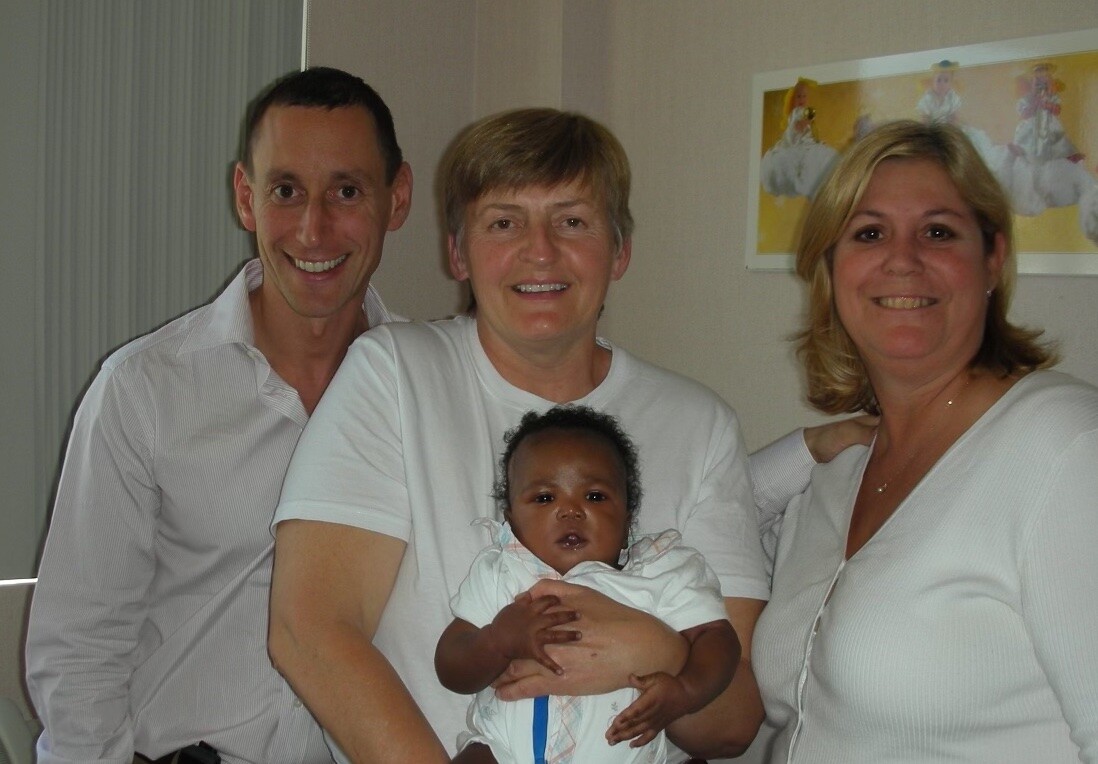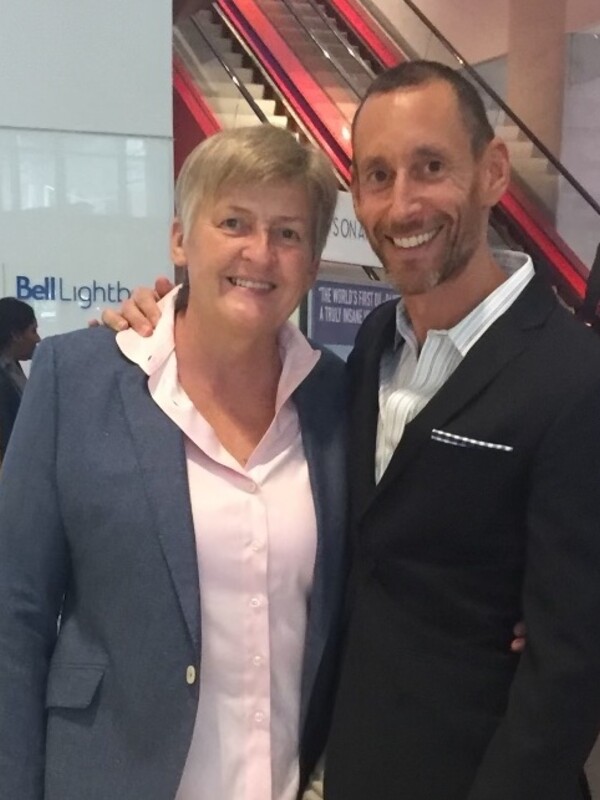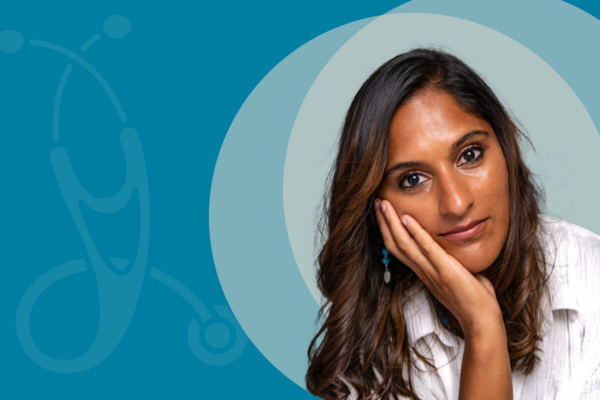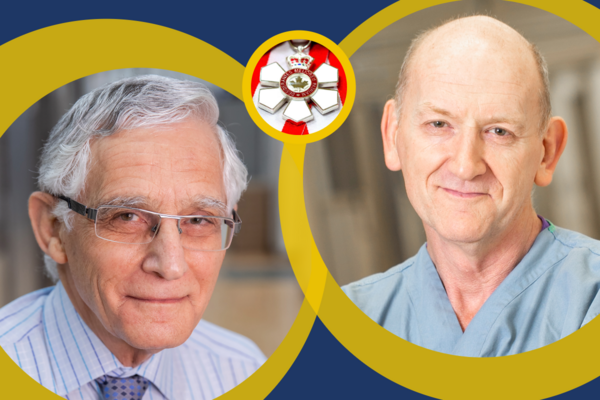Faculty member wins award for leadership in social justice for the HIV/AIDS community
Dr. Mark Yudin co-founded the Positive Pregnancy Program in 2006

St. Michael’s Hospital’s Positive Pregnancy Program — led by Dr. Mark Yudin, a professor in our Department, alongside midwife Jay MacGillivray and nurse Cathy Beatty — has been recognized with a Casey Award for Leadership in Social Justice for the HIV/AIDS community. This is an annual award given out by Casey House (a Toronto health care institution) to individuals or groups working within the HIV/AIDS community across Canada.
Founded in 2006, the clinic provides quality health care for pregnant individuals living with HIV. With a trauma-aware approach that marries obstetrics and midwifery, the team has been involved in the birth of nearly 400 healthy babies, with approximately 30 clients coming to the P3 Clinic each year.
Around 80 per cent of those clients are part of racialized and Indigenous communities, many of whom have also had to deal with stigma and discrimination after becoming pregnant.
We caught up with Dr. Yudin to discuss the history of the Positive Pregnancy Program, the clinic’s unique cross-disciplinary approach to care, and the importance of normalizing pregnancy within the community of families affected by HIV.

What was the story behind the founding of the Positive Pregnancy Program (P3 Clinic)?
I am an obstetrician with an interest in caring for women living with HIV, so I was seeing HIV-positive pregnant women in my practice. At the same time, a midwife in Toronto named Jay MacGillivray was also very involved in providing care to members of the HIV community and was seeing women living with HIV in her practice.
For a period of time, patients were going back and forth across the city to see her and to see me, and it didn’t make a lot of sense. Jay and I actually knew each other for a long time prior to this, so we started talking and said: “Hey, rather than patients seeing us each individually, why don’t we come together and start seeing patients together?”
So we created this program where patients could come and see us together, and that’s what became the Positive Pregnancy Program, or P3.
What sort of work went into launching the clinic initially?
It was a long process! We spent two or three years doing the work toward formalizing this — with support from the hospital and support from midwifery governing boards — to allow an OB and a midwife to work together in a program. In Ontario, people can’t see both an OB and a midwife as a primary provider, they have to see one or the other. This is one of the only programs I’m aware of in the province where the funding model has allowed for an OB and a midwife to work together as equal providers, so the pregnant person has both looking after them. They’re almost getting a two-for-one special where they’re seeing both a qualified OB and a qualified midwife, and benefitting from the best of both care models.
We also needed to involve many other partners for this program to be able to provide comprehensive care, including our colleagues in HIV care, pediatrics, pharmacy and mental health. We are also very proud of the fact that our clinic was built with extensive community involvement, and we had (and continue to have) strong links to the HIV/AIDS community and service organizations in Toronto and around the GTA.
Can you explain the P3 clinic’s trauma-informed approach?
Some of it comes from the demographics of the people we’ve seen over the years. Roughly 80 per cent of the individuals who come through our clinic are Black women, and most of those are coming from countries in Africa, with a smaller proportion coming from Caribbean countries. But we know that within this population, there are a few common threads. The first is that many of the people we see are newcomers to Canada — either they’ve come during the pregnancy as refugees, or they’ve been in Canada less than five years and originally came as a refugee. Most of these people have acquired HIV through some type of trauma, and many of them actually have PTSD related to their experiences prior to arriving in Canada. So we strongly apply this trauma-informed lens to what we do in many ways.
As one example, typically if you have HIV and you go to an HIV clinic for your first visit, one of the first things you are usually asked is to give a detailed history of how you acquired HIV. We never do that — we never ask how people acquired HIV. First of all, in some ways it doesn’t matter how someone acquired HIV in terms of how you’re going to provide care for them. And particularly in this population, since most people have acquired HIV through trauma, it’s very triggering to have that conversation, so we don’t ask.
We also have a full-time social worker in our clinic who functions both to help with things that people might need, especially newcomers to Canada — things like housing, legal aid, settlement issues, and peer support — but we also have links through our social worker to our perinatal psychiatry program, because a lot of the people we see may have PTSD, depression, or anxiety, and we really rely on mental health support for this population.
The last thing I’d say is we really believe in the power of physical touch. In medicine, it’s become almost taboo — people worry that if you touch or hug a person, it might be misconstrued as inappropriate. We really feel that among people who have experienced trauma or who are HIV positive, touch can be powerful. Hugging a person or touching their arm or shoulder can send a lot of subtle messages and show acceptance, a lack of fear, and safety. We believe that physical touch is a powerful thing that when used appropriately can be therapeutic and healing for people.
More than 350 healthy babies have now been born through this program. What’s your feeling when you look back on what the clinic has accomplished?
I think you can look at the metrics as an accomplishment — how many pregnancies, how many healthy babies — but I think another way is what we call the de-medicalization of pregnancy in families affected by HIV. We like to look at these pregnancies just like every other pregnancy. This is a person who is pregnant, and who is hopefully happy and excited about it. It doesn’t have to be so medicalized.
The care of HIV in general over the past 15-20 years has certainly become more simplified in terms of both drug regimens and achieving health outcomes. We’ve seen the same thing in pregnancy. So I think that one thing that all those healthy and successful pregnancies has accomplished is that it’s shown the greater medical community that this is possible, and that having HIV doesn’t automatically mean you have a “high-risk pregnancy.”
These pregnancies can be approached very similarly to pregnancies among people without HIV. There are certainly some clinical nuances and some things we do differently, but I think back in the day, having HIV would automatically put you in the category of high-risk pregnancy, and that brings with it a lot of anxiety for both patients and providers. I hope we’ve helped to normalize pregnancy for this community.
Also, our work occurs not just during pregnancy, but we do a lot of pre-pregnancy work as well among couples where one or both people have HIV in terms of how they safely achieve pregnancy. So we provide reproductive health care not just during pregnancy but pre-pregnancy and post-partum as well.
What does it mean to you to receive this award from Casey House?
It actually is very meaningful and pretty emotional for me. Jay and I have said for a long time that of everything we’ve done in our careers, this is the thing that we’d like to be remembered for the most. This is the thing I feel most proud of in my career, that I’ve been able to be involved in this work with this amazing community of people. It’s very nice to be recognized for that and to feel that you’ve really made a difference and that it's been noticed.
The other thing we always say is that this is an incredible population of people to work with. Most of our clients are individuals with very traumatic experiences in their lives. It’s been very inspiring to work with people who can come through trauma and move into such a happy period of life and embrace it. We always say that we’ve learned more from our P3 patients and clients than they’ve learned from us.



